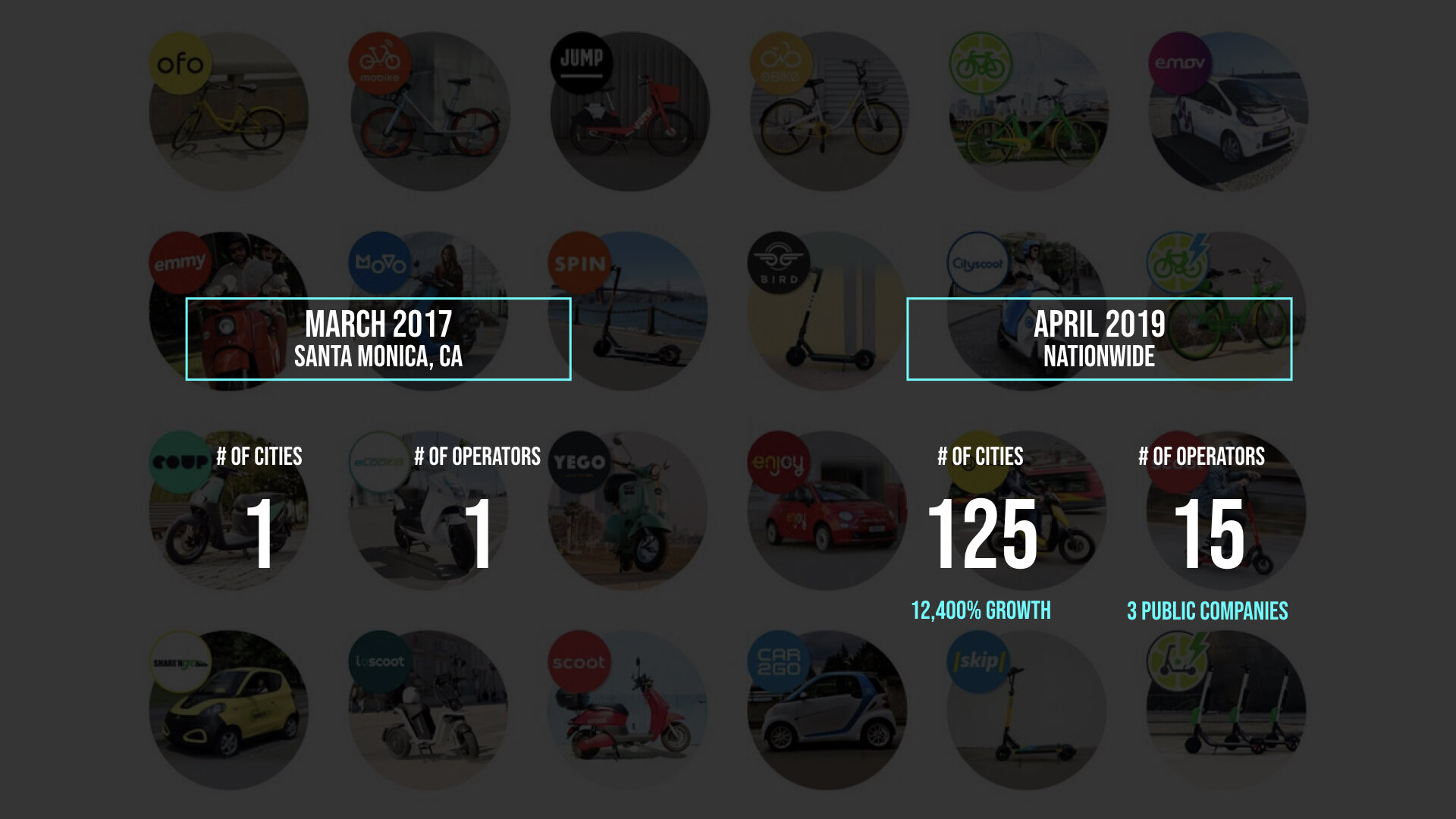
Optimizing Mobility Operations for Local Municipalities
Rethinking Urban Mobility: How to scale mobility Operations
The Challenge: Managing the Unstructured Growth of Dockless Mobility
In 2018, cities faced an operational crisis with the rapid expansion of dockless mobility devices (bikes, scooters). Unlike regulated public transit, these services emerged suddenly, overwhelming municipalities with street clutter, safety concerns, and logistical inefficiencies. Cities lacked the systems, policies, and operational frameworks to manage them effectively, creating a disconnect between adoption and regulation.

Approach: Validating Desirability, Feasibility & Viability
Desirability: Partnered with city officials, transit agencies, and mobility providers to assess pain points and align on a shared operational strategy.
Feasibility: Designed a pilot program in key cities to test fleet management, permitting models, and demand forecasting.
Viability: Created a self-sustaining business model by integrating payment structures, compliance automation, and data-sharing protocols—ensuring long-term success without reliance on subsidies.
With cities permitting multiple scooter vendors, each operating independently of each other, municipalities needed a centralized dashboard to manage their mobility programs.
Rapid Innovation & Iterative Scaling
With urban transit evolving in real time, we needed an agile operational approach:
Real-Time Data Systems – Built dashboards to track fleet distribution, optimize rebalancing, and reduce congestion.
City Integration – Developed APIs to sync with city transportation systems, ensuring policy compliance and operational efficiency.
Scalable Deployment Model – Designed an adaptive operational framework that allowed cities to regulate fleet sizes dynamically based on demand and infrastructure readiness.
Cities also needed a centralized impact analysis of how scooters were utilizing streets and sidewalks, to understand where improvements were needed.
Evolution & Continuous Improvement
As dockless mobility matured, new challenges required adaptive solutions:
User Behavior & Safety Compliance → Implemented heat mapping analytics to help city transportation officials identify high-usage areas, enabling data-driven infrastructure investment and more strategic allocation of limited funding.
Cross-Platform Expansion → To address data gaps from mobility operators, developed ScooterTrack, a system that provided independent tracking for cities to monitor usage, enforce compliance, and improve urban planning.
Operational Efficiencies → Consolidated disparate data sources into a centralized dashboard, giving transportation officials and city councils a clear view of how mobility devices were impacting infrastructure. This ensured compliance with municipal permitting guidelines and established an automated, self-sustaining model—helping cities shift their micromobility programs from a cost center to a financially neutral or even revenue-generating initiative.
ScooterTrac was Digital Unity’s mobile application, that allowed city officials to capture pinpoint accurate filed data violations and centrally report data into the platform, to supplement the real-time API data from mobility vendors.
As a newly regulated industry, cities had difficulty with scalable enforcement. Digital Unity optimized compliance monitoring and provided an unbiased assessment of vendor operations.
Outcome: Transforming Urban Mobility Operations
Through this work, we helped cities regain control over dockless mobility, improving compliance rates, transit efficiency, and infrastructure planning. Our operational strategy became a blueprint for municipalities worldwide, setting the foundation for sustainable micromobility ecosystems.




